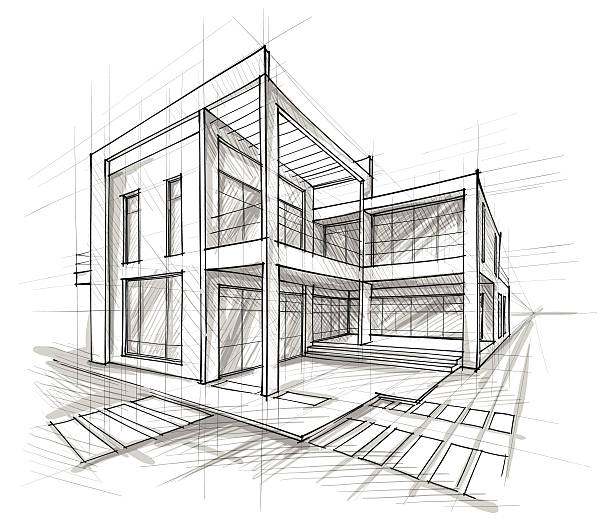Explore Prize-winning Projects by Prominent CDA Architects
Understanding the Collaborative Refine In Between Engineers and Engineers in Modern Building Projects
The collective procedure between architects and engineers is vital in modern construction tasks, as it integrates style intent with design feasibility. Checking out these dynamics reveals understandings that might significantly impact job results and overall industry criteria.
The Importance of Partnership
The collaborative synergy in between engineers and designers is necessary for the successful realization of any kind of building job. This partnership unites unique expertise and perspectives, enabling the integration of innovative layout with functional engineering options. By collaborating, designers and engineers can make sure that a job not just meets aesthetic and useful needs however additionally sticks to safety and security, sustainability, and budgetary restraints.
Collaboration cultivates a shared vision, facilitating the alignment of goals and assumptions from the start. This alignment is crucial in addressing potential difficulties and mitigating threats that can develop throughout the job lifecycle. A collaborative approach permits for the reliable allowance of resources, optimizing both time and cost.
The value of partnership extends to the repetitive process of design and construction, where comments from engineers can inform architectural choices, bring about even more feasible and sustainable layouts. Conversely, designers can inspire designers to assume artistically regarding how to accomplish structural stability without jeopardizing creative intent. Ultimately, the collective relationship between designers and engineers is not merely beneficial; it is fundamental to the production of high-quality, practical, and cutting-edge built settings that fulfill the demands of culture.
Interaction Strategies and Devices
Reliable interaction methods and devices are important for promoting collaboration in between architects and engineers throughout the project lifecycle. Developing clear networks of interaction is vital to make sure that all staff member are straightened with project purposes, timelines, and obligations. Regular conferences, both in-person and virtual, supply possibilities for stakeholders to discuss progress, address issues, and make notified choices.
Utilizing job management software, such as BIM (Building Details Modeling) systems, improves partnership by enabling real-time sharing of design modifications and technological specifications. These devices facilitate openness, allowing engineers and designers to picture modifications and analyze their influence on the total job.

Shared Goals and Task Vision

Establishing common goals entails open dialogue and an extensive understanding of each self-control's payments. Engineers usually concentrate on design intent, spatial relationships, and individual experience, while designers highlight architectural honesty, systems performance, and conformity with regulations (cda architects). When these viewpoints are aligned, the result is a natural task that adheres to both innovative aspirations and technical expediency
Moreover, a well-defined job vision cultivates accountability among staff member, motivating each individual to take possession of their duty in attaining the desired result. Routine sites check-ins and collective workshops can better strengthen this commitment, permitting changes to be made as the task evolves. Inevitably, a common vision not just improves team effort yet also elevates the top quality of the final deliverable, causing effective job conclusion.
The Function of Innovation
Leveraging modern technology has actually come to be necessary in enhancing collaboration between engineers and designers. The assimilation of sophisticated software tools facilitates real-time interaction and details sharing, enabling teams to work much more effectively and efficiently. Structure Information Modeling (BIM) attracts attention as a critical innovation, enabling both architects and engineers to create thorough 3D versions that encapsulate layout intent and architectural stability. This common visual depiction minimizes misunderstandings and enhances the decision-making process.
In addition, cloud-based platforms make it possible for smooth partnership, allowing job stakeholders to gain access to and upgrade project information from anywhere. This fosters a society of transparency and responsibility, as changes can be tracked and reviewed in real-time. In addition, mobile applications additional boost communication, providing on-site groups with immediate accessibility to project specifications and updates.
Emerging modern technologies such as expert system and artificial intelligence are also starting to contribute in anticipating analysis, aiding teams recognize potential issues prior to they arise. Inevitably, the duty of modern technology in architecture-engineering cooperation not just enhances workflow efficiencies but additionally boosts advancement, causing more successful task end results. By accepting these technological developments, architects and designers can make sure a much more cohesive and effective collective process throughout the building and construction lifecycle.
Instance Research Studies in Successful Collaborations
Many case researches show the profound influence of efficient partnerships in between designers and discover this designers on job outcomes. One remarkable example is the collaboration on the High Line in New York City City, where landscape architects, designers, and metropolitan organizers collaborated to change an abandoned railway into a lively navigate to this site public park. This multidisciplinary method not just improved the visual quality yet also made certain structural safety and security and environmental sustainability.
An additional exemplary situation is the design and building of the Sydney Concert Hall. The partnership in between architect JÃ ¸ registered nurse Utzon and architectural engineer Ove Arup exhibited innovative analytical. Their cooperation enabled the famous shell-like style while resolving complex design obstacles, ultimately causing a classic architectural masterpiece.
The Burj Khalifa in Dubai better demonstrates the importance of joint initiatives. cda architects. The integration of design and design proficiency allowed the task group to achieve unmatched heights while sticking to safety and security regulations and aesthetic vision
These examples highlight the value of interaction, trust, and shared objectives. In today's complicated building and construction setting, such collaborations are important to navigating difficulties and providing jobs that satisfy both useful and visionary objectives.
Verdict
In final thought, the collaboration between engineers and designers is vital for the success of modern construction tasks. Efficient communication strategies, a common project vision, and the assimilation of sophisticated technologies are critical parts that facilitate this partnership.